Abiding In God's Grace Ministries {A.I.G.G.M.}
AIGGM BIBLE STUDIES - TRUE HISTORY
Saturday [God's TRUE Sabbath] October 16th, 2021
Chapter 1 - God’s Calendar and His Sabbaths According to the Bible:
Chapter 1
God’s Calendar and His Sabbaths According to the Bible
Part One
The development of our modern Gregorian calendar
In order to piece together God’s prophetic plan an understanding of God’s calendar is needed, because this is the calendar by which He has planned His future events but first we need to understand why our modern Gregorian calendar’s origins are pagan and is not God’s calendar.
The Gregorian calendar is named after Pope Gregory the thirteenth (b.1502 – d.1585), which came about because in 1582 this Pope over saw the amendment of the older Julian calendar in order to bring it into very close alignment with the astronomical solar year of 365.25 days, as by then it was 11 days out of sync.
The older Julian calendar was named after Julius Caesar (b.100BC – d.45BC) which came about because in 46 BC he over saw the amendment of the even older Roman Republic calendar, that the first century BC Greek astronomer and mathematician Sosigenes (d.31BC) was employed to amended and bring it into relative alignment with the astronomical solar year.
The even older Roman Republic calendar was called the ‘Fasti Antiates Maiores’ or ‘Calendar of Permitted days of the Greater Antiates Peoples’ which had been used in Rome since at least 173BC and perhaps as far back to 738BC when king Romulus, the first purported king of Rome ruled over Rome (Reign 753BC – 716BC).
Shown in the picture below are fragments of a Roman Republic calendar that date to between 84 and 55 BC, which were discovered in 1915 in the ruins of Nero’s villa at Antium (Anzio) near Rome and is now housed in the Palazzo Massimo alle Terme Museum in Rome. More than 200 other fragments of this Roman republic calendar have been found so far.
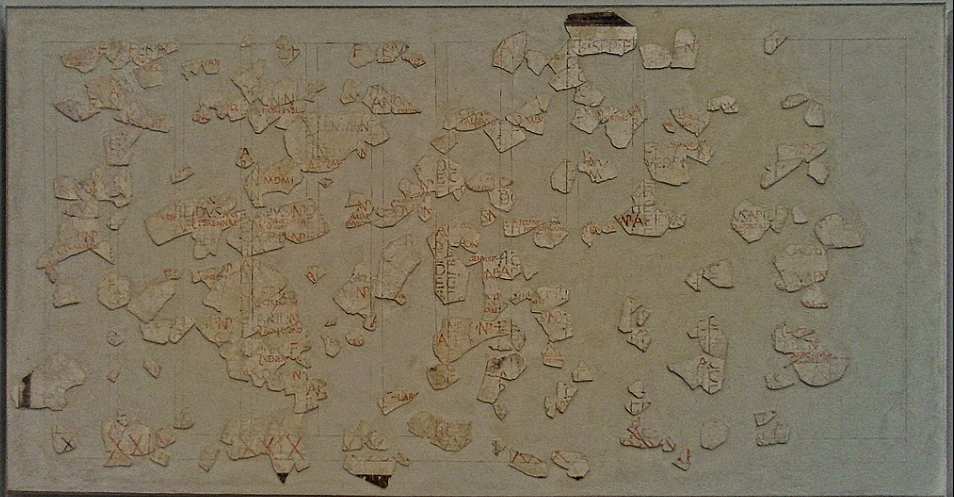
1 Fasti Antiates, Palazzo Massimo alle Terme, Rome
https://en.wikipedia.org/wiki/Roman_calendar
Below is a recreation of what this Roman Republic calendar looked like. It has abbreviated names of the months arranged across the top, preceded by the letter K for ‘Kalends’ which means ‘the first day of the month’ and from where the word calendar comes from.
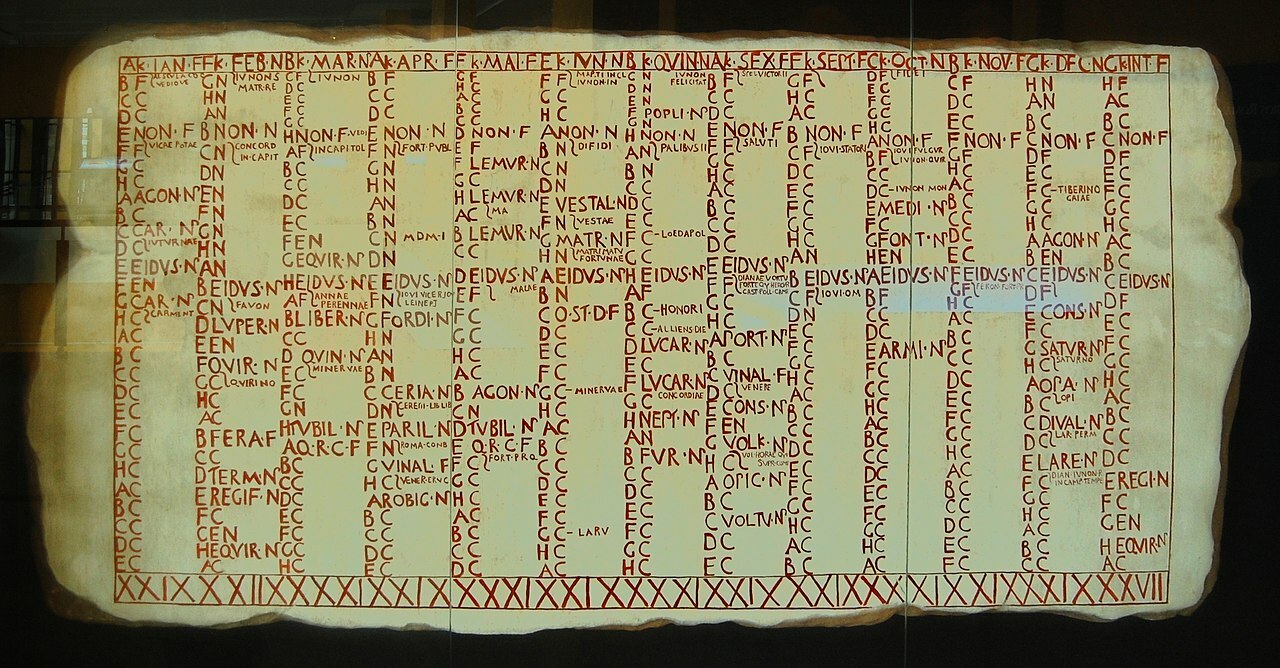
2 Roman Republic Calendar alt
Unlike our modern calendar it does not have a seven day week but instead has an eight day week that are called Nundina, as labelled from A to H and a further letter denoting what was permitted on those days for the ruling classes. I will come back to this eight day week in a moment but as can also be seen there are thirteen months with a total number of days listed at the bottom of each month, with a total of 382 days per year.
This was because this type of calendar was based on the lunar cycle, which was a common type of ancient calendar derived from the ancient Greeks, Babylonians and Hebrew lunar calendars. The extra thirteenth intercalary month was added every two or three years after the month of February, to keep it in relative alignment to the solar year, because 12 lunar months only have 354.37 days per year. The origins of the names of these months are all Roman and pagan as seen in the table below:
Month From the Latin
January Januarius, in honour of the Roman two faced god Janus.
February Februarius, in honour of the Roman festival of general recompense and purification that occurred on the ‘ides’ when the moon was full.
March - Martius, in honour of the Roman god of war Mars.
April - Aprilis, in honour of the goddess Apru (Aphrodite) whose festival was on the first of the month. It’s also derived from the Latin ‘Aperio’ meaning to open, as it’s when the earth opens to produce new fruits. new fruits.
May - Maius, in honour of the Greek goddess Maia.
June - Junius, in honour of the Roman goddess Juno.
July - Julius, in honour of Roman emperor Julius Caesar but it was originally called Quintilis which is Latin for five.
August - Augustus, in honour of Roman emperor Augustus Caesar but it was originally called Sextilis which is Latin for six.
September October November December - The rest of the months: September, October, November, December are derived from the Latin words for the numerals 7, 8, 9, and 10.
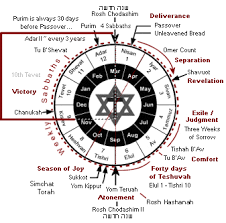
Gregorian [Pagan] Calendar
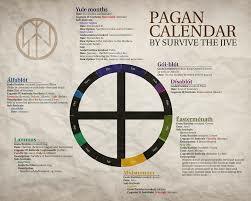
Pagan Calendar
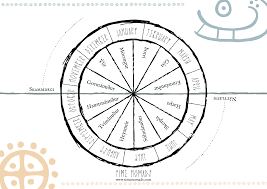
Ancient Norse [Pagan] Calendar
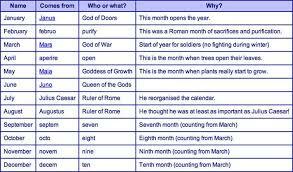
[Pagan] Origins Of The Names Of The Months
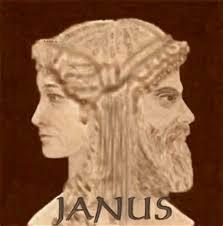
Ancient [Pagan] god Janus [January]
Like The satanic deity Of satan, The baphomet, This Statue Of The Ancient [Pagan] god For January, Janus, Is Depicted As BOTH Male and Female.
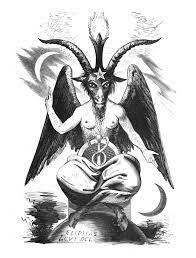
[Ancient Pagan] baphomet- [both] Male and Female Genitalia
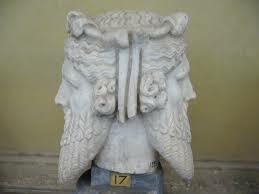
Ancient Pagan god Janus [January], Always Depicted Of Being Two-Headed. This Time Depicted As [With] Two-Headed Men.

[Pagan] Gregorian Calendar - MANS Day Of The Week.

Ancient Pagan Origin and Meaning For "Tuesday".

Ancient [Pagan] Hearth Wheel Of Hellenism
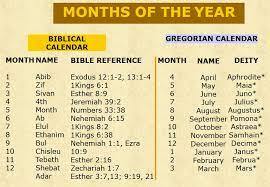
Months Of The Year Calendar. BIBLICAL Calendar VS. The Gregorian Calendar.

Ancient Pagan Origins Of The - Names Of The Days Of The Week, Names Of The Months and Planets, Etc..
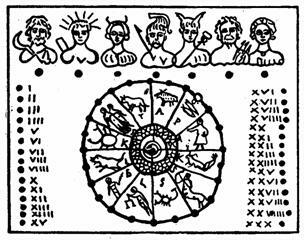
Ancient Pagan Wheel Of The Ancient Parapegma Calendar
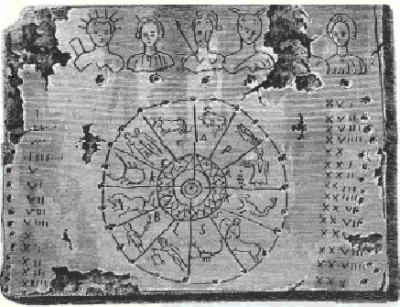
Ancient [Pagan] Italy Planetary Calendar
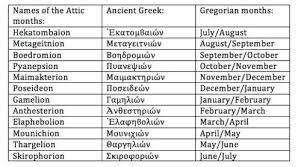
Ancient [Pagan] Gamelian Calendar
Month From the Latin :
January - Januarius, in honour of the Roman two faced god Janus.
February - Februarius, in honour of the Roman festival of general recompense and purification that occurred on the ‘ides’ when the moon was full.
March - Martius, in honour of the Roman god of war Mars.
April - Aprilis, in honour of the goddess Apru (Aphrodite) whose festival was on the first of the month. It’s also derived from the Latin ‘Aperio’ meaning to open, as it’s when the earth opens to produce new fruits. new fruits.
May - Maius, in honour of the Greek goddess Maia.
June - Junius, in honour of the Roman goddess Juno.
July - Julius, in honour of Roman emperor Julius Caesar but it was originally called Quintilis which is Latin for five.
August - Augustus, in honour of Roman emperor Augustus Caesar but it was originally called Sextilis which is Latin for six.
September October November December - The rest of the months: September, October, November, December are derived from the Latin words for the numerals 7, 8, 9, and 10.
As can also be seen the last six months were originally numbered from five to ten, which some believe points to an older ten month calendar that originally did not account for the rainy winter period but this theory has never been conclusively proven. The most likely explanation however is because most other ancient lunar calendars began the year when the vernal equinox occurs in March (or when the harvest of the first grain crops begin, notably barley in the spring around March or April). The reason why the lunar Roman Republic calendar started in January rather than March has been conjectured about.
https://en.wikipedia.org/wiki/Romancalendar#citeref-28

King Numa Pompilius , Rome
However, the most likely reason, was because King Numa Pompilius (b.753BC – d.673BC), who become the second king of Rome in 715 BC, highly venerated the pagan god Janus. History records that one of his first acts as king was to construct a temple to Janus at the foot of the Argiletum road in Rome which is claimed to be his most famous architectural achievement and after securing peace with Rome’s neighbours he kept the doors of this temple shut for the rest of his reign and that this was a unique case in all of Rome’s history. It is this dedication of King Numa to Janus that points to why he is credited with altering months eleven and twelve to become the first months January and February of the calendar year in around 713 BC.
https://en.wikipedia.org/wiki/NumaPompilius#citeref-LivyAba10-1
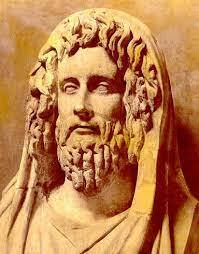
Statue Of King Numa Pompilius

Coin Of King Numa Pompilius
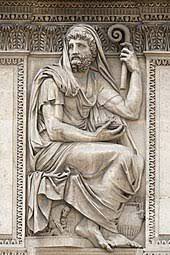
Huge Ancient Statue Of King Numa Pompilius
This is substantiated by Roman historian Plutarch (b.46AD – d.119AD) in his book written in the early second century:
The parallel lives. The life of Numa. Chapter 18:2-3
2 But Numa, estimating the extent of the inequality at eleven days, since the lunar year had three hundred and fifty-four days, but the solar year three hundred and sixty-five, doubled these eleven days, and every other year inserted after the month of February the intercalary month called Mercedinus by the Romans, which consisted of twenty-two days. 3 This correction of the inequality which he made was destined to require other and greater corrections in the future. He also changed the order of the months. March, which had been first, he made the third month, and January, which had been the eleventh under Romulus, he made the first month; February, which had been twelfth and last, thus became the second month, as now. But there are many who say that these months of January and February were added to the calendar by Numa,
However, by the first century BC the Roman Republic calendar had become hopelessly confused, not only because the intercalary thirteenth month was difficult for everyone, in a growing Roman Empire, to keep up to date with every time it was added but it was further compounded by political manoeuvrings. For instance the chief high priest, the Pontifex Maximus of the college of Pontiffs, had the authority to delay the thirteenth month in order to extend the term of a particular magistrate or public official, or visa versa.

Roman Painting Of Julius Caesar
However, Julius Caesar put a stop to all of this when he implemented his Julian calendar in 46BC, which had twelve fixed months every solar year, although the eight day week of the old Roman republic calendar continued to be used with the new Julian calendar, as recorded by Roman Historian Cassius Dio (b.155 – d.235) who mentions that it had continued to be used during the first century, when he mentions ‘Market day’ that was held every nine days. Market day was held on day eight of the week, as denoted by the letter ‘H’ and the Roman way of counting was was inclusive, so that it was held every nine days. This is in his book written in 229 AD:
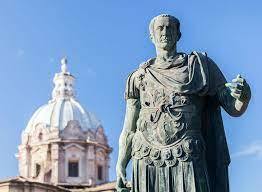
Roman History Book 48 Chapter 33:4
In the year preceding this, men belonging to the order of knights had slaughtered wild beasts at the games in the Circus on the occasion of the Ludi Apollinares, and an intercalary day had been inserted, contrary to the rule, in order that the first day of the succeeding year should not coincide with the market held every nine days—a clash which had always been strictly guarded against from very early times.
https://lexundria.com/dio/48/cy
https://en.wikipedia.org/wiki/Juliancalendar#citeref-33
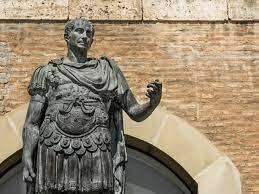
[Possibly Bronze] Stone Statue In Rome Of Julius Caesar
Therefore, the seven day week that we use today must have been introduced into the Julian calendar some time after 46BC. Many people, including Christian’s, believe that it must have been introduced from the Bible by the Jews or Christian’s; so that today we are using the original week as begun at creation but there is Absolutely NO EVIDENCE of this, at all. Instead, Sunday is the actual FIRST day of the week .. NOT Monday!
The Pope changed it centuries ago and the Papacy [Vatican. Pope. Rome] also changed the TRUE Day of GOD ALMIGHTY's SABBATH, from it's Original Biblical Holy Day Saturday .... to Sunday for sun worshipping [Sol Invictus] in allegiance to satan and the fallen angels.
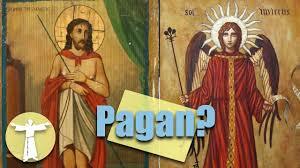
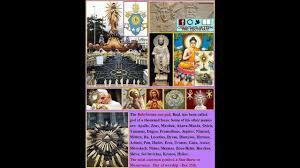
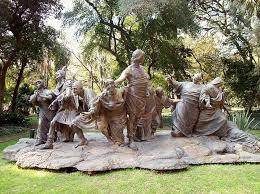

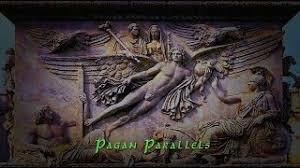
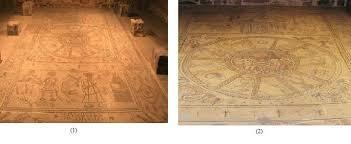
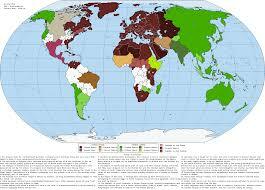
Instead, the [REAL] evidence from [The REAL and TRUE] history shows that the Roman’s had been subjugating and persecuting the Jew’s and when Christianity began the Romans did the same to them.
Therefore, there is Absolutely NO way that the Roman’s were going to take on board the seven day calendar week from either of these obscure sects, who the Romans were killing in their tens of thousands; from the first century BC to the fourth century AD.
So where did the seven day week we currently use come from?

Ancient Painting Of [Pagan] Sun god [Sol Invictus] -
Later Depicted and Passed As Jesus Christ [Yeshua Hamashiach] . This Is NOT Yeshua Hamashiach Jesus Christ, This IS In Fact Satan / Sun god / Saturnalia / Satanism
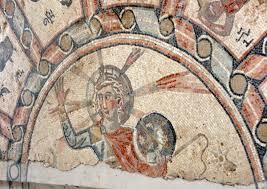
Ancient Artwork Of Sol Invictus [Sun god] [Paganism] [Satanism] With Sphere.
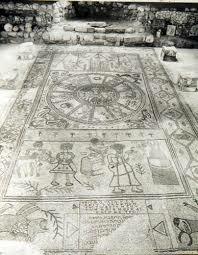
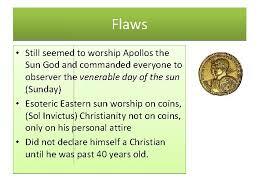

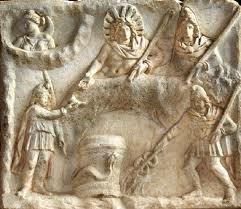

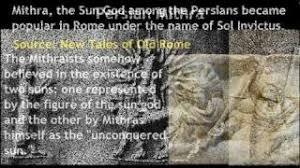
As you may realize these were by no means the only calendars used in history, in fact hundreds of calendars from history have been discovered all over the world, each with varying lengths of weeks and months, and calculated using a variety of methods. All these calendars throughout history competed for supremacy, with the most accurate easy to use and popular calendars becoming more widely used, or calendars which were used by the majority winning out over other calendars used by the minority.
In the first century AD another calendar made its way to Italy, this was the seven day week planetary calendar, as shown in the picture below of a stone carving called a Parapegma, that was a device for keeping track of cyclical events such as seasons etc. It was found in 1930 at the baths of Roman Emperor Titus (b.39AD – d.81) in Rome, that were constructed between 79 and 81AD and is now housed at the Museum of the Roman Civilization in Rome. There are holes in this stone calendar for placing sticks in, so that the day of the week, the date and the month can be marked.
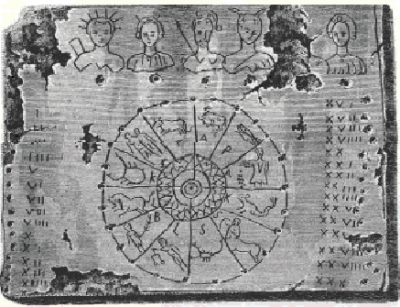
3 Roman Planetary Stick Calendar Carving
https://dayology.com/2017/03/24/the-trajans-baths-parapegma/
Each of the seven days were named after the seven planetary gods and goddesses that the Roman’s worshipped. Below is a picture of a Silver and gold Roman worship statuette of Tutela, the Gallo-Roman goddess of protection that dates to 150 to 220 AD and is on display at the British Museum. She is seen as supporting these same seven gods of the planetary week as seen from left to right; Saturn (the eldest of the gods who ruled over agriculture), Sol (sun), Luna (moon), Mars, Mercury, Jupiter and Venus. (Along with with heads of Diana and Apollo in her left hand and Castor and Pollux on her wings).
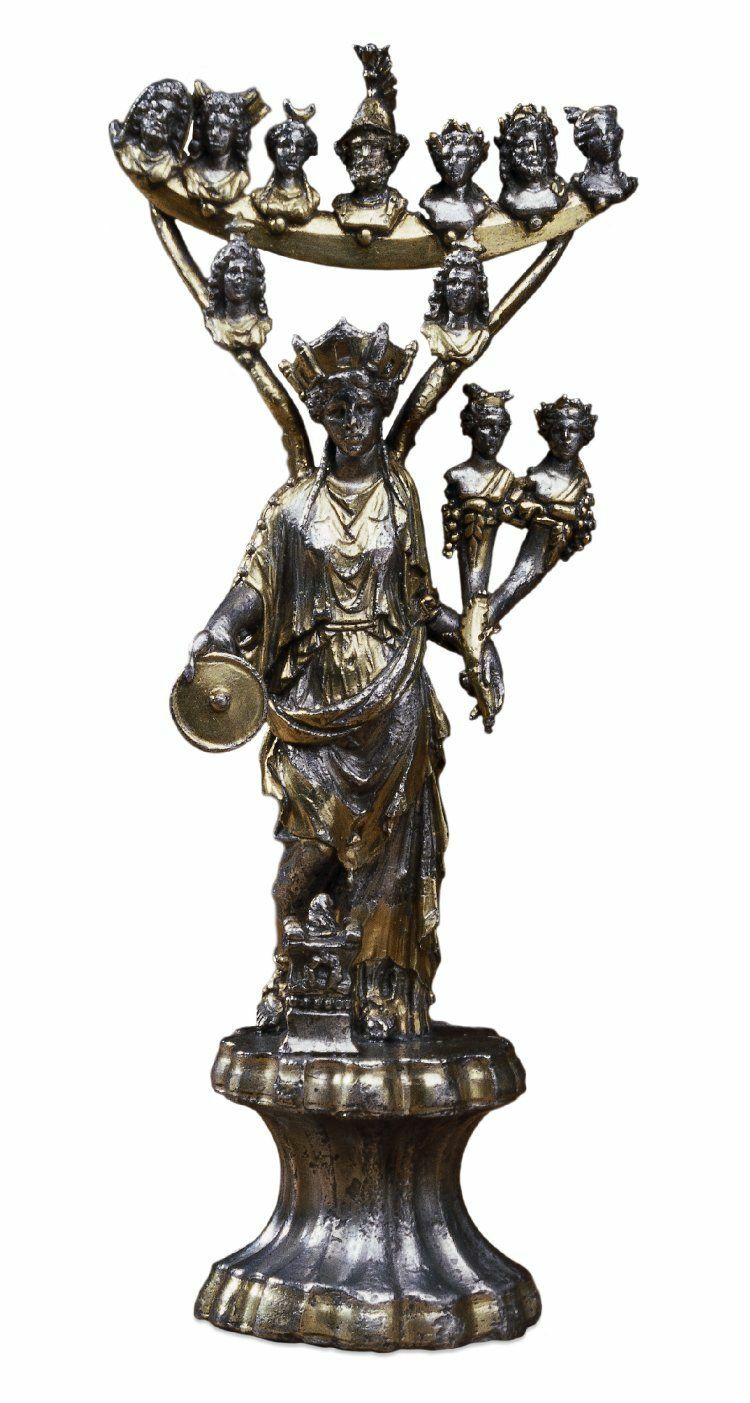
4 Gallo-Roman goddess Tutela
https://www.britishmuseum.org/collection/object/G_1824-0424-1
Cassius Dio also reported on this calendar as being used throughout the Roman Empire during his time in the second century, stating that it had been a recent adoption from Romanised Ptolemaic Egypt and that it was based on astrology, as shown by the twelve signs of the Zodiac on the Parapegma stick calendar, along with the seven heavenly bodies representing the days of the week. Cassius also explains two methods the Romanised Egyptians used to order the days of week from their understanding of the order of the seven visible classical planets, as seen from the Earth. Cassius Dio’s references to this can be found in his book:
Roman History Book 37 Chapters 18 & 19
18 The custom, however, of referring the days to the seven stars called planets was instituted by the Egyptians, but is now found among all mankind, though its adoption has been comparatively recent; at any rate the ancient Greeks never understood it, so far as I am aware. But since it is now quite the fashion with mankind generally and even with the Romans themselves, and is to them already in a way an ancestral tradition, I wish to write briefly of it, telling how and in what way it has been so arranged. I have heard two explanations, which are not difficult of comprehension, it is true, though they involve certain theories. For if you apply the so -called “principle of the tetrachord” (which is believed to constitute the basis of music) to these stars, by which the whole universe of heaven is divided into regular intervals, in the order in which each of them revolves, and beginning at the outer orbit assigned to Saturn, then omitting the next two name the lord of the fourth, and after this passing over two others reach the seventh, and you then go back and repeat the process with the orbits and their presiding divinities in this same manner, assigning them to the several days, you will find all the days to be in a kind of musical connection with the arrangement of the heavens. 19 This is one of the explanations given; the other is as follows. If you begin at the first hour to count the hours of the day and of the night, assigning the first to Saturn, the next to Jupiter, the third to Mars, the fourth to the Sun, the fifth to Venus, the sixth to Mercury, and the seventh to the Moon, according to the order of the cycles which the Egyptians observe, and if you repeat the process, covering thus the whole twenty-four hours, you will find that the first hour of the following day comes to the Sun. And if you carry on the operation throughout the next twenty-four hours in the same manner as with the others, you will dedicate the first hour of the third day to the Moon, and if you proceed similarly through the rest, each day will receive its appropriate god. This, then, is the tradition.
https://lexundria.com/dio/37/cy
https://www.timeanddate.com/calendar/days/7-days-week.html

Ancient Pagan god Sol - Sun Worshipping- Satan- Saturnalia - Sol Invictus

Ancient Egyptian [Sol Invictus] Sun Worship
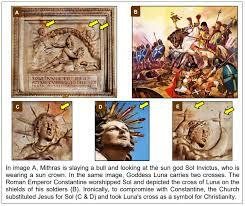
Ancient Sun Worshipping - [Sol Invictus / Winter Solstice] Saturnalia - Modern Adaption Of Paganism - Satanism - Worshipping Of The Sun Is Worship of Satan.
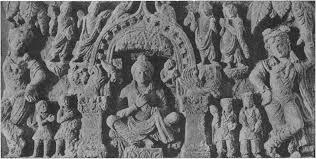
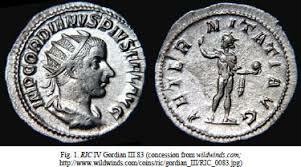
Ancient [Pagan] Sol Invictus [Sun Worship] Coinage

 The Anunanki - Fallen Angels - The Watchers - Sol Invictus - Satan - Saturnilia - Winter Solstice
The Anunanki - Fallen Angels - The Watchers - Sol Invictus - Satan - Saturnilia - Winter Solstice
The days of the planetary seven day week originally named after the Greco-Roman gods associated with the seven classical planets, were later rendered into their Germanic interpretations based on indigenous deities, from which we then get their Anglicised names; Monday, Tuesday, Wednesday, Thursday, Friday, Saturday and Sunday, as shown below.
Week Day Planet Greco-Roman Deity Latin Germanic Name Old English
Saturday Saturn Cronus-Saturndies Saturnī Zaterdags æterndæg
Sunday Sun Helios-Sol dies Sōlis Sun sunnandæg
Monday Moon Selene-Luna dies Lūnae Moon mōnandæg
Tuesday Mars Ares-Mars dies Martis Tiwaz tiwesdæg
Wednesday Mercury Hermes-Mercury dies Mercuriī Wodanaz wōdnesdæg
Thursday Jupiter Zeus-Jupitar dies Iovis Þunraz þunresdæg
Friday Venus Aphrodite-Venus dies Veneris Frige frīgedæg
Below is a drawing of the Parapegma calendar, notice Sunday (Sol), as depicted by the rays of light coming from Sol’s head, is the second day of the week rather than the first and that Saturday was the first day of the week rather than the seventh! This is of course assuming the day of Saturn was some how meant to also be the Sabbath just because they sound vaguely similar? Which makes no sense considering they have no real connection other than the day of Saturn was the most venerated day as the Sabbath is, but even if that assumption is true then of course the day of Saturn is on day one rather than day seven?
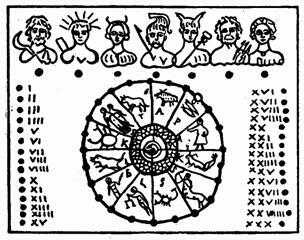
5 Planetary calendar
Along with this fact there is also the fact that all the days are based on the seven classical planets and their associated pagan gods, rather than anything from the Bible. These facts conclusively prove the current seven day week used around the world does not originate from God’s Biblical seven day week.
However, the reason Sunday became the day of rest on the planetary calendar rather than Saturday, was because of the increased popularity of the worship of the Roman god ‘Sol Invictus’ (Unconquered Sun) who was the official sun god of the later Roman Empire and the patron of soldiers.

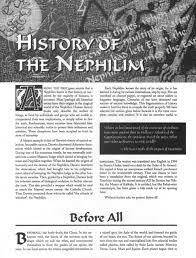

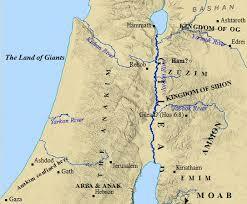
The Return Of The Nephilim

Kandahar Giant [Middle Eastern Giant] - That The United States (USA) Military Faced Off Against.

Demons and Evil Spirits [Demonic Entities] Are The Disembodied Spirits Of The Nephilim - Which Are The Children Of The Fallen Angels and Human Women - The Giants.
On 25th December 274 AD the Roman Emperor Aurelian (b.214 – d.275) made Sol Invictus an official religion alongside the traditional Roman cults. This god was favoured by emperors after Aurelian and appeared on Roman coins until 387 AD.
https://en.wikipedia.org/wiki/Sol_Invictus#:~:text=Sol%20Invictus%20(Classical%20Latin%3A%20%5B,alongside%20the%20traditional%20Roman%20cults.
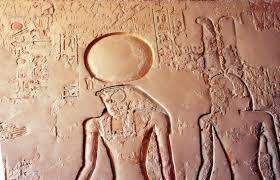
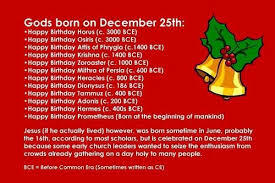
Eventually the planetary seven day week became ubiquitous throughout the Roman empire and on the 7th March 321 AD Rome’s first Christian Emperor Constantine I (b.272 – d.337) who had also been a solider and a Sol Invictus ‘sun cult’ worshipper, decreed that Sunday would be observed as the Roman’s official day of rest, forcing all Christians to rest on this day, by declaring:
“On the venerable Day of the Sun let the magistrates and people residing in cities rest, and let all workshops be closed in the country.”
https://en.wikipedia.org/wiki/SolInvictus#citeref-34

Nephilim Skeleton and Skull
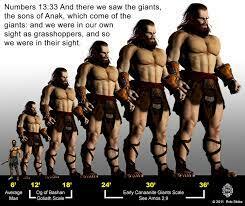
Moses Tells Us Of The Nephilim
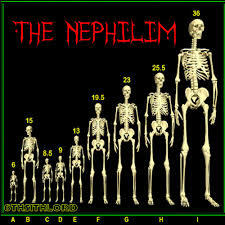
Different heights Of Skeletons Unearthed Of The Nephilim Verses Human Heights.
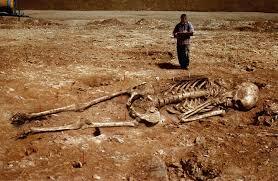
Real Life Skeleton [Unearthed] Of The Nephilim

After The Deluge - Anunnaki - The Watchers / Fallen Angels - The Nephilim / Giants - Aliens - Genetic Manipulation - Genetic Modification - Genetic Engineering - Genetic Altering

Illuminati Card Game - The Nephilim / Giants - The Might Of The Nephilim.

Book:The Rise and Fall Of The Nephilim
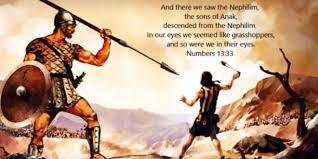
Numbers 13:33 = Genesis 6:1-4 King James Version [KJV.]

[Possible] Anunnaki Genealogy Tree

7 Great gods Of The Anunnaki - Mythology - The Fallen Angels / The Watchers - The Nephilim / The Giants - Aliens - Demons - Demonic Entities.
Constantine’s position on religions traditionally practiced in Rome evolved during his reign. At first his coinage and other official motifs until 325 AD had affiliated him with the pagan cult of Sol Invictus. He also encouraged the construction of new pagan temples and accepted traditional additional sacrifices but by the end of his reign he had begun to order the pillaging and tearing down of these Roman temples.
https://en.wikipedia.org/wiki/ConstantinetheGreatandChristianity#citeref-EusebiusSchaff55-0
However, despite the official adoption of Sunday as a day of rest by Constantine, the Nundial eight day week continued to be used until at least the late fourth to early fifth century, as according to James Ker in his 2010 book ‘Nundinae: The Culture of the Roman Week’, Phoenix, Vol. 64, No. 3, p.360–385.
https://en.wikipedia.org/wiki/Nundinae#citeref-FOOTNOTEKer201036446-0
This is also substantiated by Pierre Brind’Amour in his 1983 book ‘The Roman Calendar: Chronological Research’ p.256-275.
https://en.wikipedia.org/wiki/Week#cite_ref-31
As the popularity of the planetary seven day week in the Roman Empire increased with Sunday becoming its venerated day due to Sol Invictus sun worship, even Christian’s adopted it as the day to worship on and the first specific notation of Christians gathering on Sunday is by Justin Martyr (b.100 – d.165) a gentile of Roman decent, who stated in his 150 AD book ‘First apology of Justin’ Chapter 67.
“But Sunday is the day on which we all hold our common assembly, because it is the first day on which God, having wrought a change in the darkness and matter, made the world; and Jesus Christ our Saviour on the same day rose from the dead. For He was crucified on the day before that of Saturn; and on the day after that of Saturn, which is the day of the Sun.”
https://www.newadvent.org/fathers/0126.htm
Justin Martyr’s comments clearly shows his assumption that the pagan seven day planetary calendar is also the Biblical week.
Another record of Christians worshipping on Sunday was made by Christian author Tertullian (b.160AD) who admitted that early Christians of his persuasion prayed eastward to the sunrise on Sunday just as pagans did and that pagans held Sunday as their rest-day just as he did, in his 197 AD book ‘To the Pagans’ Chapter 8.
Commentary: ‘Tertullian now turns to the pagan charge that the Christians worship the sun and conduct their main worship service on Sunday. Once again there are similar trends in pagan practice. The pagans who disapprove of deviating from one’s own ways should acknowledge that in fact they have borrowed this inclination in favour of the Sabbath from the Jews. Pagans and Christians again stand under the same condemnation.’
Tertullian: “Others of kinder disposition imagine that the sun is the Christian god. They have observed that when we pray, we face to the east and we rejoice on the day of the sun. Do you do anything less than this? Do you not sometimes cause your lips to quiver toward the rising sun as an act of adoration? It is most definitely your preference to single out Sunday, the seventh day from the sequence, to refrain from bathing, at least until evening? This is also your designated day for leisure and festivity. By doing this you depart from your traditional practices in favour of alien religions. The Jewish festivals are the Sabbath and the feast of purification. And the Jews also have the rite of the lamps and of fasting with unleavened bread and prayers at the seashore — all of which are alien to your gods. Now to return to our subject, you who deride us for sun worship and Sunday worship, see how close you are to us. We are not far removed from your Saturn and your Sabbath.”
http://www.tertullian.org/articles/howe_adnationes1.htm
Again however, like Justin Martyr, Tertullian is also assuming the seven day planetary calendar is the same as the Biblical seven day week but as we have seen the origins of the planetary calendar are pagan and that the day of Saturn, as day one of the planetary calendar, does not match the Sabbath, that is day seven of the Biblical calendar. Even the Jews in the Roman Empire were eventually allowed to rest on the day of Saturn, as recorded by Cassius in his book.
Roman History Book 37 Chapter 17:3
– the day called the day of Saturn, on which, among many other most peculiar observances, they undertake no serious occupation.
https://lexundria.com/dio/37/cy
So here we see references to Christians recognizing Sunday as the first day of the week by at least 150 AD and shows the popularity of the pagan planetary seven day week, which originally had Sunday as its second day. So why did Christians worship on the wrong day using an unbiblical pagan calendar?
There are a couple of logical reasons, firstly most of them would have had no knowledge the planetary seven day week was any different to the Biblical week, as shown by the assumptions made by Justin Martyr, Tertullian and Cassius (and even like most Christians today do). After all most converts to Christianity in the Roman Empire had been using, or were at least aware of the planetary seven day week and would have had no reason to object to using it, especially as most people were illiterate and had little or no access to the very rare, hand written historical records and the very rare biblical texts that would have helped them know about their different origins.
Secondly, Christians were being persecuted over the first few centuries and therefore had to obey the Roman way of life; “When in Rome do as the Romans do”. If they didn’t they ran the risk of being put to the test of having to burn incense to the pagan Roman deities and if they failed to do that they would usually be executed, often in the arena with wild animals. Besides, even if a Christian did somehow find out they were worshipping on the wrong day, it is not a salvation issue anyway and they would have been more focused on the Great Commission of telling others about Jesus whenever it was safe enough to do so.
For example, even though the Jewish apostles Peter and Paul would have know the Roman calendar was pagan, when they came to Rome, they instead preached about Jesus rather than which day was really the Sabbath, as this was a minor issue in comparison. This is also why this issue is not specifically written about in the Bible, similar to how it not often mentioned today within Christianity.
In fact one of the earliest references to any Christian voicing there concerns over this issue was not until the fifth century when there were enough devotees to Sol Invictus that the Christian theologian Augustine (b.354 – d.430) found it necessary to preach against it, although this was only to do with the day Sol was supposed to be born, the 25th December and recognizing that God had created the sun.
https://en.wikipedia.org/wiki/SolInvictus#citeref-8
Further more to all this evidence there is absolutely no evidence that Jesus or the Jews of His time ever used this Romanised Egyptian pagan planetary seven day week calendar, let a lone the Julian calendar, as used by their Roman oppressors.
In addition the Biblical calendar that Jesus and the Israelite’s had been using had existed for over 1500 years prior to the Julian calendar’s introduction and over a 1000 miles away from Rome too, in Israel. Yet in the Bible we often read about God’s original calendar, this Biblical calendar is revealed from scripture in part two below.
Part Two
God’s Calendar
The Hebrews had been using a calendar from at least when Moses left Egypt and which goes back even further to the flood, for example we read in Exodus:
Exodus 12:1-2
1 The LORD said to Moses and Aaron in Egypt, 2 This month is to be for you the first month, the first month of your year.
And in Genesis:
Genesis 7:11-12
11 In the six hundredth year of Noah’s life, on the seventeenth day of the second month, on that day all the springs of the great deep burst forth, and the floodgates of the heavens were opened.
This calendar given by God is completely different to the Julian and Gregorian calendars and its pagan planetary week. Firstly none of the days have names but were simply numbered by God, even the months were originally only numbered by God, although later they were given some Hebrew and Babylonian names by the Israelite’s themselves. Below are the names of these month as found in scripture (except for the months traditionally known as Tammuz and Av):
Month Hebrew name Babylonian name
1 Aviv Nisan
2 Ziv Lyyar
3 – Sivan
4 – Tammuz
5 – Av
6 – Elul
7 Ethanim Tishri
8 Bul Heshwan
9 – Kislev
10 – Tevet
11 – Shevat
12 – Adar
From scripture we can find out how this calendar was organised. God’s day begin just after sunset and ends the following day just after sunset:
Genesis 1:5
God called the light “day,” and the darkness he called “night.” And there was evening, and there was morning, the first day.
This is confirmed else where, where it describes a day as being from evening to evening:
Leviticus 23:32
It is a day of Sabbath rest for you, and you must deny yourselves. From the evening of the ninth day of the month until the following evening you are to observe your Sabbath.”
The months on God’s calendar actually begin with the sighting of the new crescent moon which was a rest day when there was a new moon feast as shown in 1 Samuel:
1 Samuel 20:18 + 24-27
18 Then Jonathan said to David, “Tomorrow is the New Moon feast. You will be missed, because your seat will be empty.
24 So David hid in the field, and when the New Moon feast came, the king sat down to eat. 25 He sat in his customary place by the wall, opposite Jonathan, and Abner sat next to Saul, but David’s place was empty. 26 Saul said nothing that day, for he thought, “Something must have happened to David to make him ceremonially unclean, surely he is unclean.” 27 But the next day, the second day of the month, [Day 2] David’s place was empty again. Then Saul said to his son Jonathan, “Why hasn’t the son of Jesse come to the meal, either yesterday or today?”
This is confirmed in Ezekiel 46:
Ezekiel 46:3
On the Sabbaths and New Moons the people of the land are to worship in the presence of the Lord at the entrance of that gateway.
After New Moon Day there were 6 days of work followed by the first Sabbath.
Leviticus 23:3
There are six days when you may work, but the seventh day is a day of SABBATH rest, a day of sacred assembly. You are not to do any work; wherever you live, it is a SABBATH to the LORD.
As a lunar month is on average 29.53059 days long, the sliver of the new moon is seen again on either days 30 or 31, at which point the monthly cycle begins again and that day then becomes day 1 – New Moon Day.
Months therefore alternate between 29 and 30 days in length and Sabbaths therefore fall on day’s 8, 15, 22 and 29 each lunar month.
Throughout the Bible, there are many places where Sabbaths are shown to fall on one of these 4 days and never on any other day of the month (with the exception of the Day of Trumpets which is the seventh new moon of the year and the Day of Atonement). Then the process begins over again with the sighting of the next new moon which is either one or two days later after day 29.
Therefore Sabbaths are not on a continuous ‘rolling’ seven day cycle like it is on the pagan Julian/Gregorian calendars. Below are some examples from scripture where Sabbaths fall on one of the four days of the 8th, 15th, 22nd and 29th.
Jesus died on the 14th Aviv (Preparation day) Just before the 15th as it says in Luke 23.
Luke 23:54-56
54 It was Preparation Day, and the SABBATH was about to begin. 55 The women who had come with Jesus from Galilee followed Joseph and saw the tomb and how his body was laid in it. 56 Then they went home and prepared spices and perfumes. But they rested on the SABBATH in obedience to the commandment.
Jesus rose on the 16th Aviv (the day of First Fruits) the day after the 15th which was a Sabbath as shown in Matthew 28.
Matthew 28:1
After the SABBATH, at dawn on the first day of the week, Mary Magdalene and the other Mary went to look at the tomb.
In Leviticus 23 God instructed Moses that the 15th and 22nd of the 7th month would be Sabbaths:
Leviticus 23:39
“‘So beginning with the fifteenth day of the seventh month, after you have gathered the crops of the land, celebrate the festival to the LORD for seven days; the first day is a day of SABBATH rest [Day 15], and the eighth day [Day 22] also is a day of SABBATH rest.
God told Moses the 15th of the first month after leaving Egypt would be a Sabbath followed by the day of First Fruits:
Leviticus 23:4-16
4 ‘These are the LORD’S appointed festivals, the sacred assemblies you are to proclaim at their appointed times: 5 The LORD’S Passover begins at twilight on the fourteenth day of the first month. 6 On the fifteenth day of that month the LORD’S Festival of Unleavened Bread begins; for seven days you must eat bread made without yeast. 7 On the first day [Day 15] hold a sacred assembly and do no regular work. 8 For seven days present a food offering to the LORD. And on the seventh day [Day 21] hold a sacred assembly, and do no regular work.’ 9 The LORD said to Moses, 10 “Speak to the Israelites and say to them: ‘When you enter the land I am going to give you, and you reap its harvest, bring to the priest a sheaf of the first grain your harvest [The first grain of the barley harvest]. 11 He is to wave the sheaf before the LORD so it will be accepted on your behalf; the priest is to wave it on the day after the SABBATH [Day 16]. 12 On the day you wave the sheaf, you must sacrifice as a burnt offering to the LORD a lamb a year old without defect, 13 together with its grain offering of two-tenths of an ephah of the finest flour [Made from the new grain of the barley harvest] mixed with olive oil, a food offering presented to the LORD, a pleasing aroma, and its drink offering of a quarter of a hin of wine. 14 You must not eat any bread, or roasted new grain, until the very day you bring this offering to your God [Day 16]. This is to be a lasting ordinance for the generations to come, wherever you live. 15 ‘From the day after the SABBATH [Day 16], the day you brought the sheaf of the wave offering, count off seven full weeks. 16 Count off fifty days up to the day after the seventh Sabbath, and then present an offering of new grain to the LORD. [The first grain of the wheat harvest].
So here it shows God is naming day 15 of the first month as a Sabbath and day 16 was called the day of First Fruits, when a sheaf of the new barley harvest was waved before the LORD and an offering of fine barley flour was burnt on the altar of incense in the temple.
However, from the above scriptures the fifty day count up to Pentecost (Shavuot in Hebrew) although counted as fifty actual days up to day 6 of month 3, as traditionally practised by present day Jews, should actually be counted to the day after the seventh full Sabbath, which is day 9 of month 3 and is the day after the actual seventh Sabbath on God’s lunar-solar calendar. This is an important point that is discussed further in chapter 2.
Also, in Exodus chapter 16 it can be determined that a Sabbath in the second month after leaving Egypt fell on day 22 of that month and therefore shows that God’s calendar and his Sabbaths are most certainly linked to the phases of the moon on days 8, 15, 22 & 29:
Exodus 16:1-26
1 The whole Israelite community set out from Elim, and came to the Desert of Sin, which is between Elim, and Sinai, on the fifteenth day of the second month after they had come out of Egypt. 2 In the desert the whole community grumbled against Moses and Aaron. 3 The Israelites said to them, “If only we had died by the LORD’S hand in Egypt! There we sat around pots of meat and ate all the food we wanted, but you have brought us out into this desert to starve this entire assembly to death.” 4 Then the LORD said to Moses, “I will rain down bread from Heaven for you. The people are to go out each day, and gather enough for that day. In this way I will test them and see whether they will follow my instructions. 5 On the sixth day [Day 21] they are to prepare what they bring in, and that is to be twice as much as they gather on the other days.” 6 So Moses and Aaron said to all the Israelites, “In the evening [Day 16] you will know that it was the LORD who brought you out of Egypt, 7 and in the morning [Also day 16] you will see the glory of the LORD, because he has heard your grumbling against him. Who are we, that you should grumble against us?” 8 Moses also said, “You will know that it was the LORD when he gives you meat to eat in the evening, and all the bread you want in the morning, because he has heard your grumbling against him. Who are we? You are not grumbling against us, but against the LORD.” 9 Then Moses told Aaron, “Say to the entire Israelite community, ‘Come before the LORD, for he has heard your grumbling.’ ” 10 While Aaron was speaking to the whole Israelite community, they looked toward the desert, and there was the glory of the LORD appearing in the cloud. 11 The LORD said to Moses, 12 “I have heard the grumbling of the Israelites. Tell them, ‘In the evening [Beginning of day 16] you will eat meat, and in the morning [Also day 16] you will be filled with bread. Then you will know that I am the LORD your God.’ ” 13 That evening [Day 16] quail came, and covered the camp, and in the morning [Also day 16] there was a layer of dew around the camp. 14 When the dew was gone, thin flakes like frost on the ground appeared on the desert floor. 15 When the Israelites saw it, they said to each other, “What is it?” For they did not know what it was. Moses said to them, “It is the bread the LORD has given you to eat. 16 This is what the LORD has commanded: ‘Everyone is to gather as much as they need. Take an omer for each person you have in your tent.’” 17 The Israelites did as they were told; some gathered much, some little. 18 And when they measured it by the omer, the one who gathered much did not have too much, and the one who gathered little did not have too little. Everyone had gathered just as much as they needed. 19 Then Moses said to them, “No one is to keep any of it until morning.” 20 However, some of them paid no attention to Moses; they kept part of it until morning, but it was full of maggots and began to smell. So Moses was angry with them. 21 Each morning everyone gathered as much as they needed, and when the sun grew hot, it melted away. 22 On the sixth day [Day 21], they gathered twice as much, two omers for each person, and the leaders of the community came, and reported this to Moses. 23 He said to them, “This is what the LORD commanded: ‘Tomorrow is to be a day of SABBATH rest, [Day 22] a holy SABBATH to the LORD. So bake what you want to bake, and boil what you want to boil. Save whatever is left, and keep it until morning.’ ” 24 So they saved it until morning, as Moses commanded, and it did not stink or get maggots in it. 25 “Eat it today,” Moses said, “because today is a SABBATH to the LORD. You will not find any of it on the ground today. 26 Six days you are to gather it, but on the seventh day, the SABBATH, there will not be any.”
